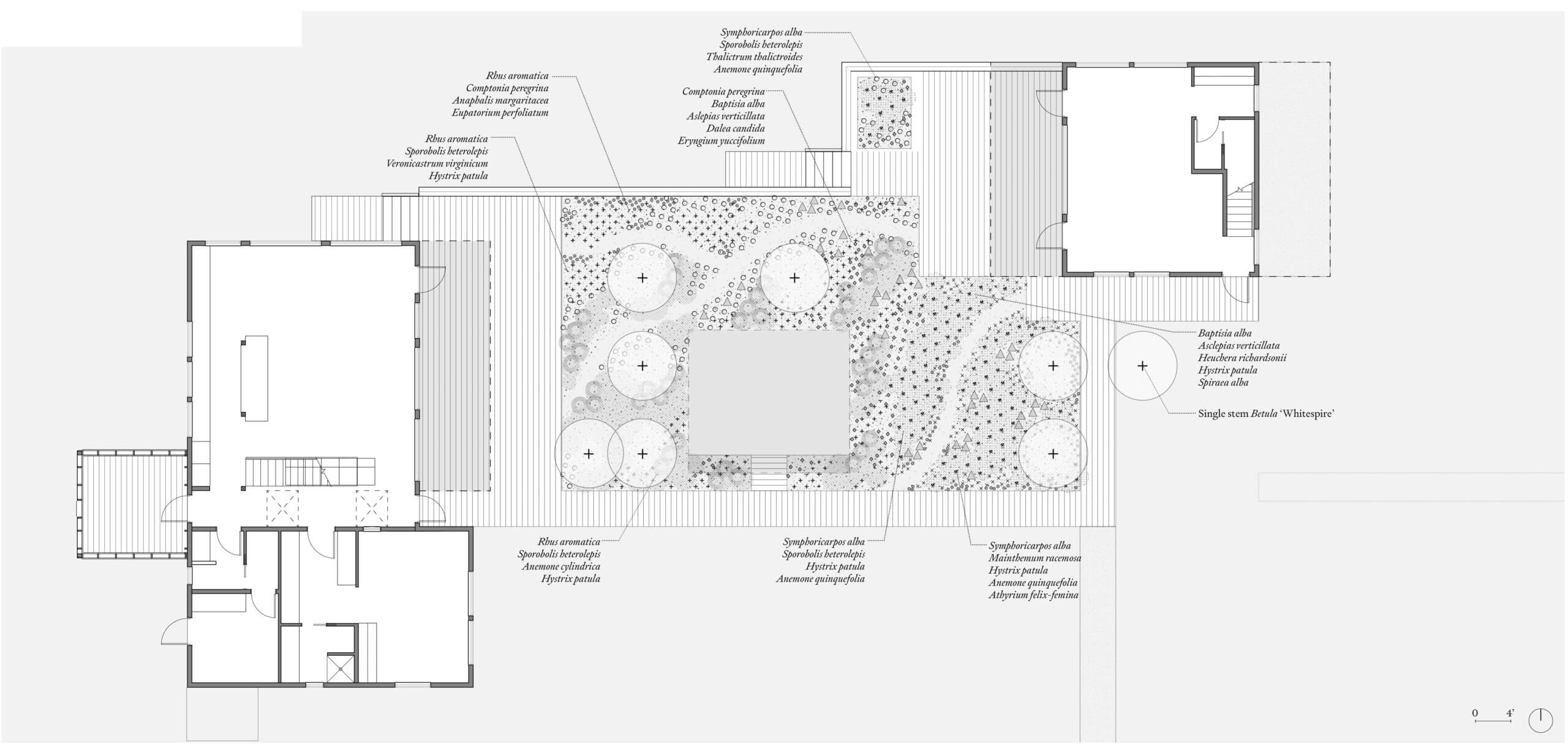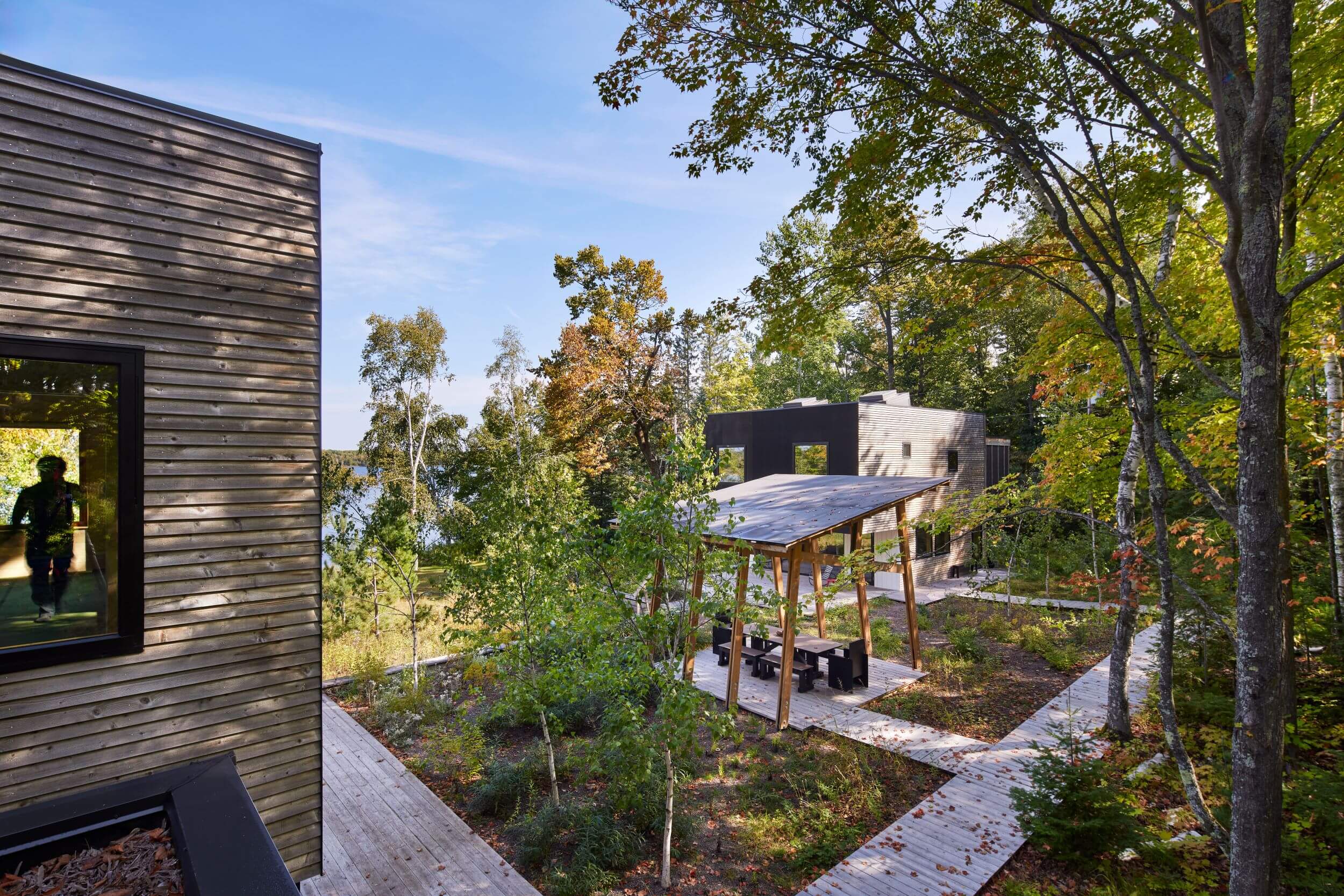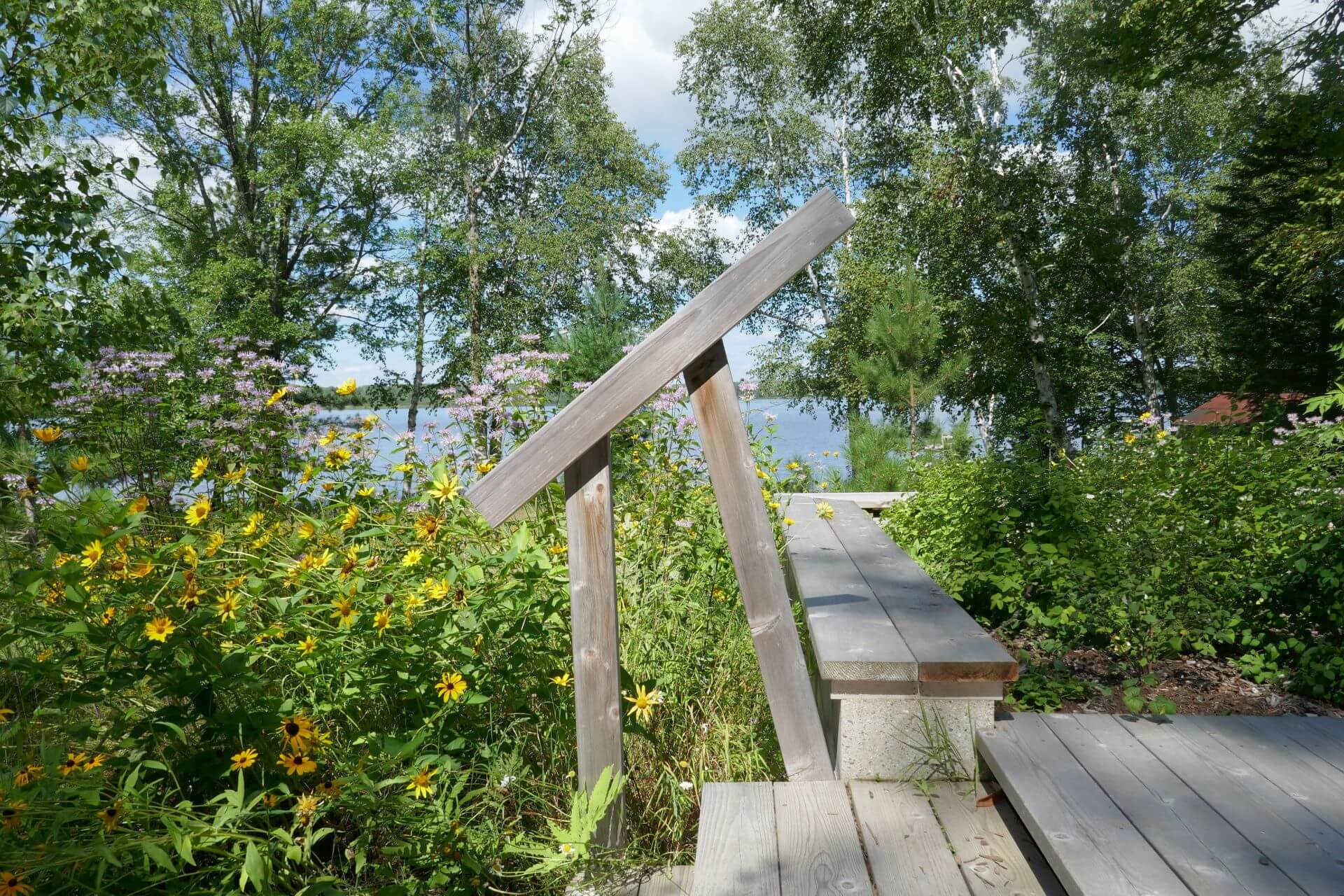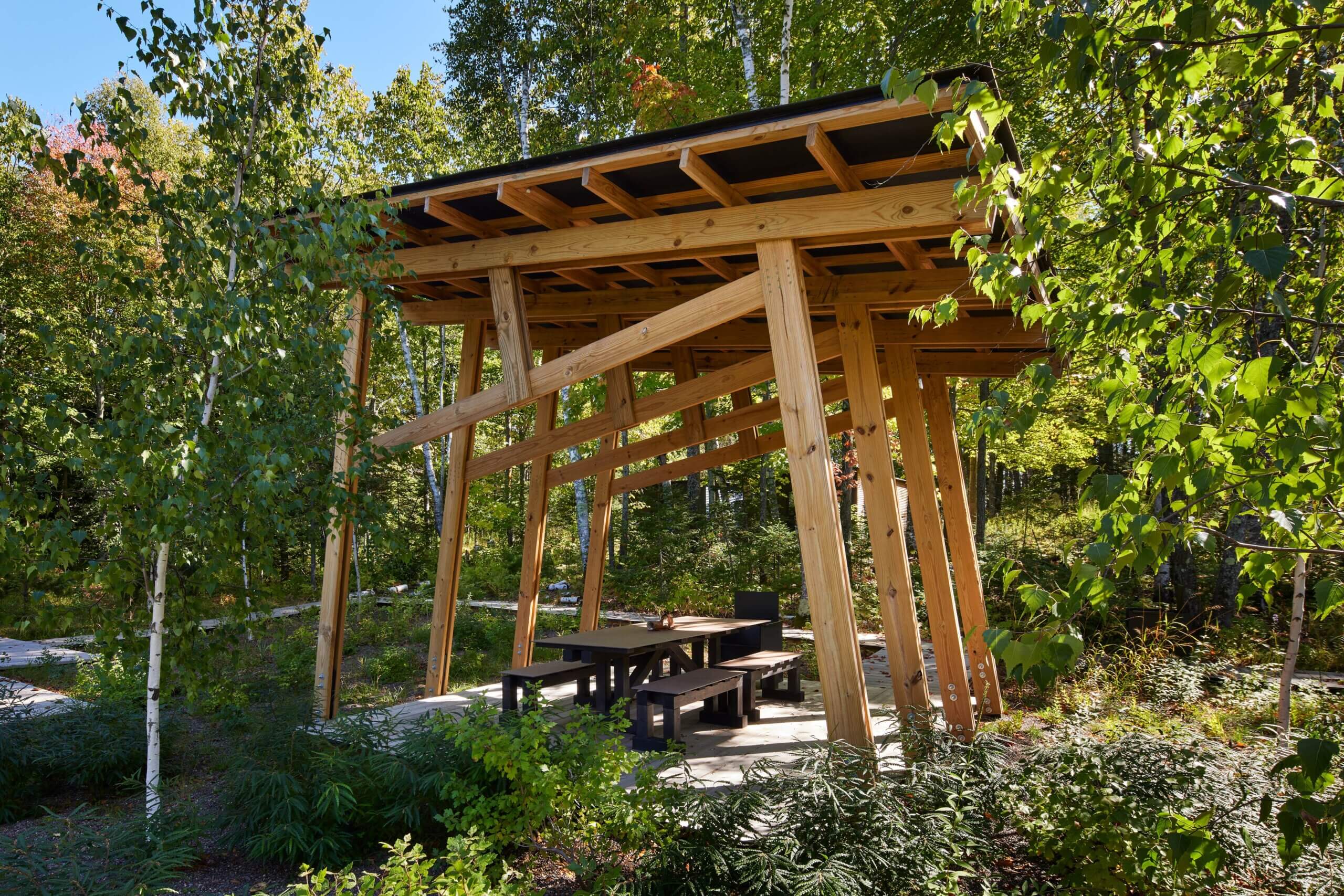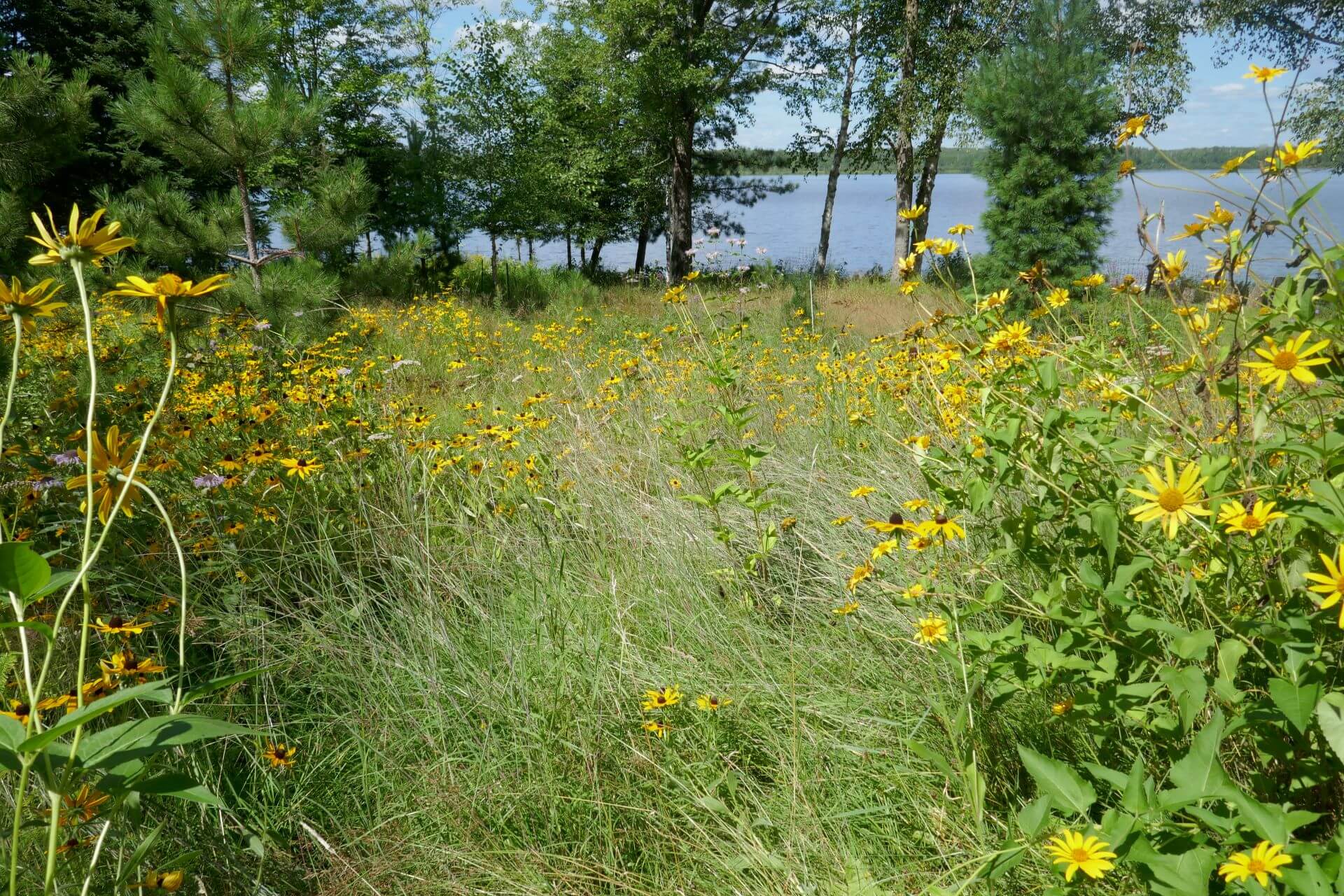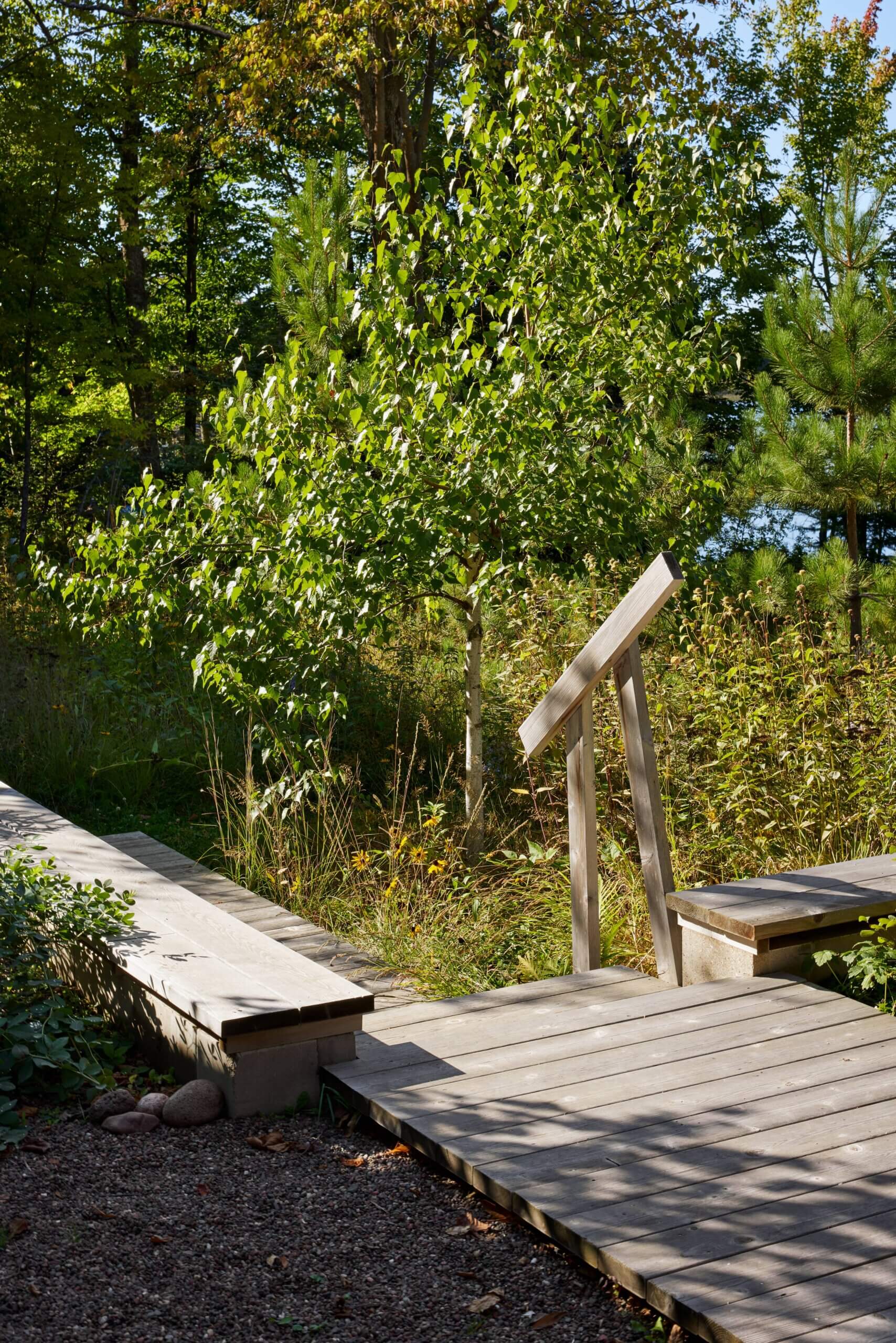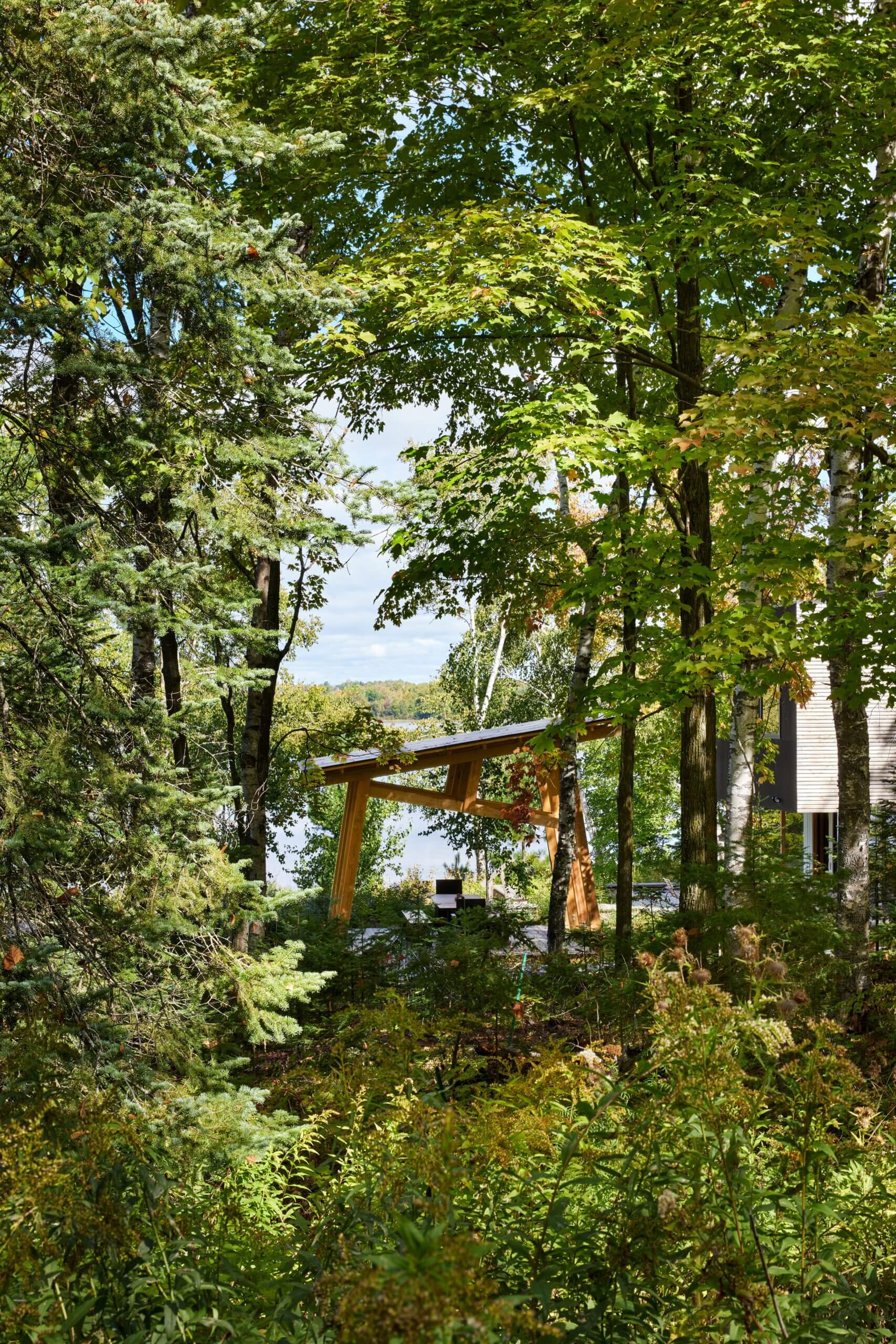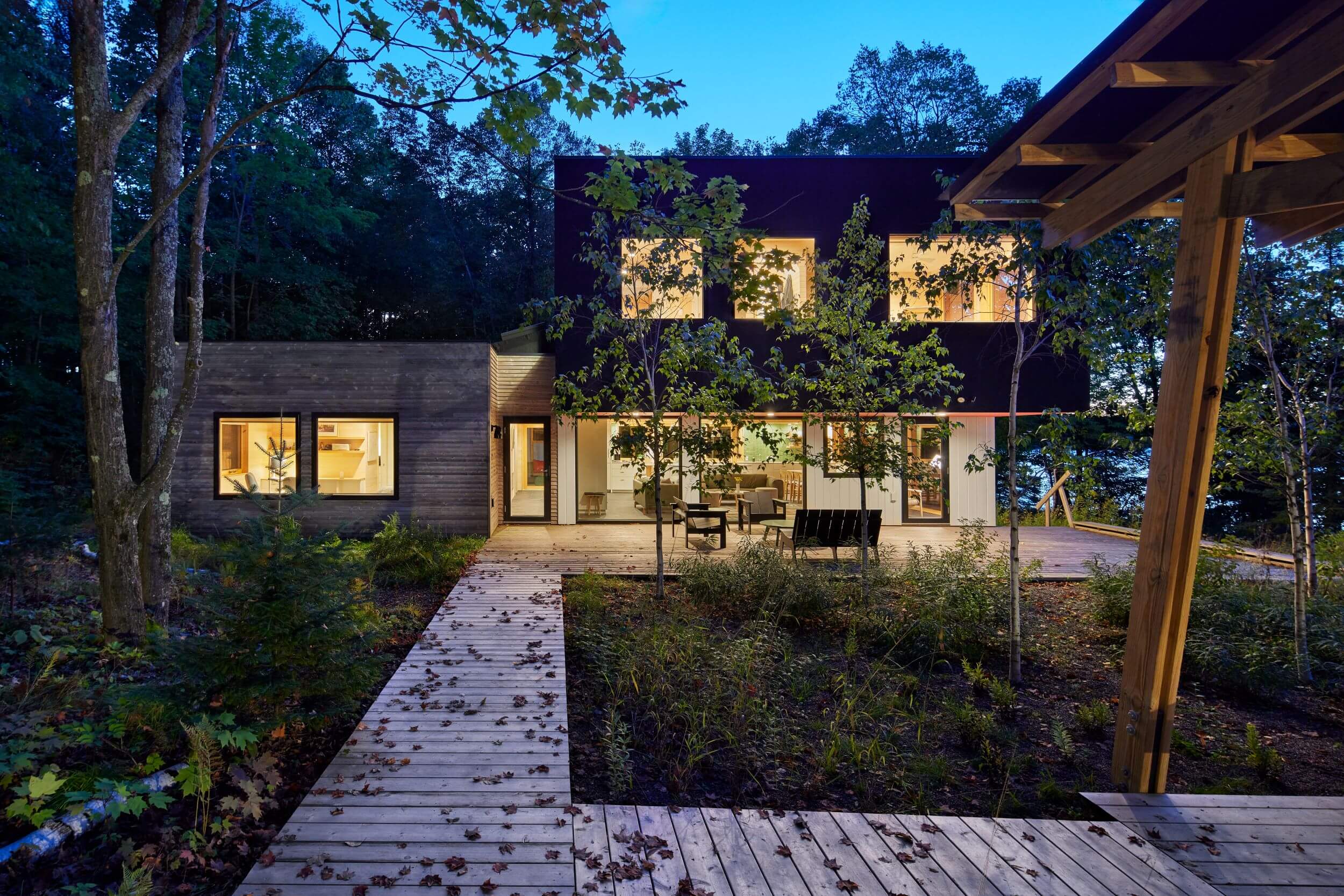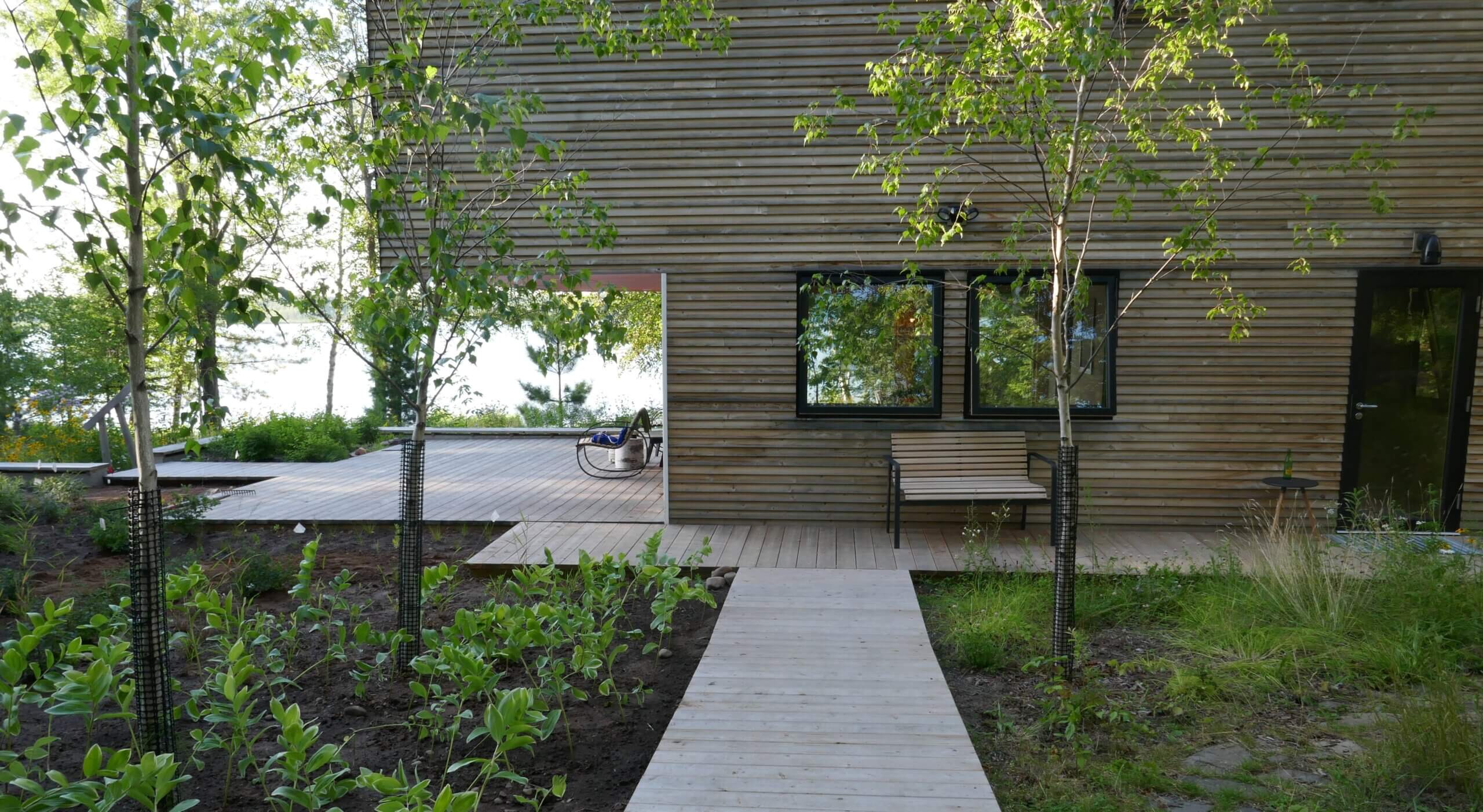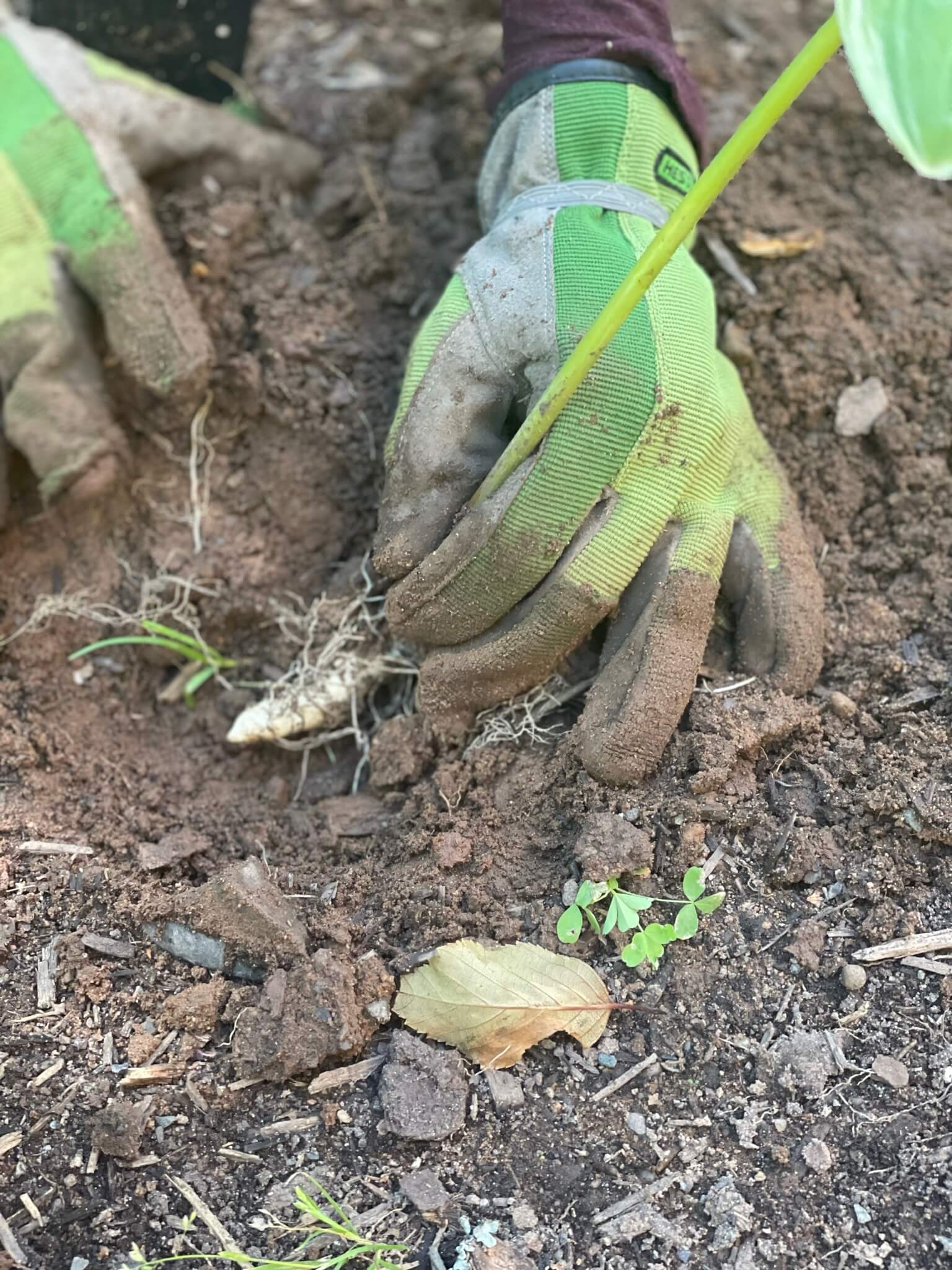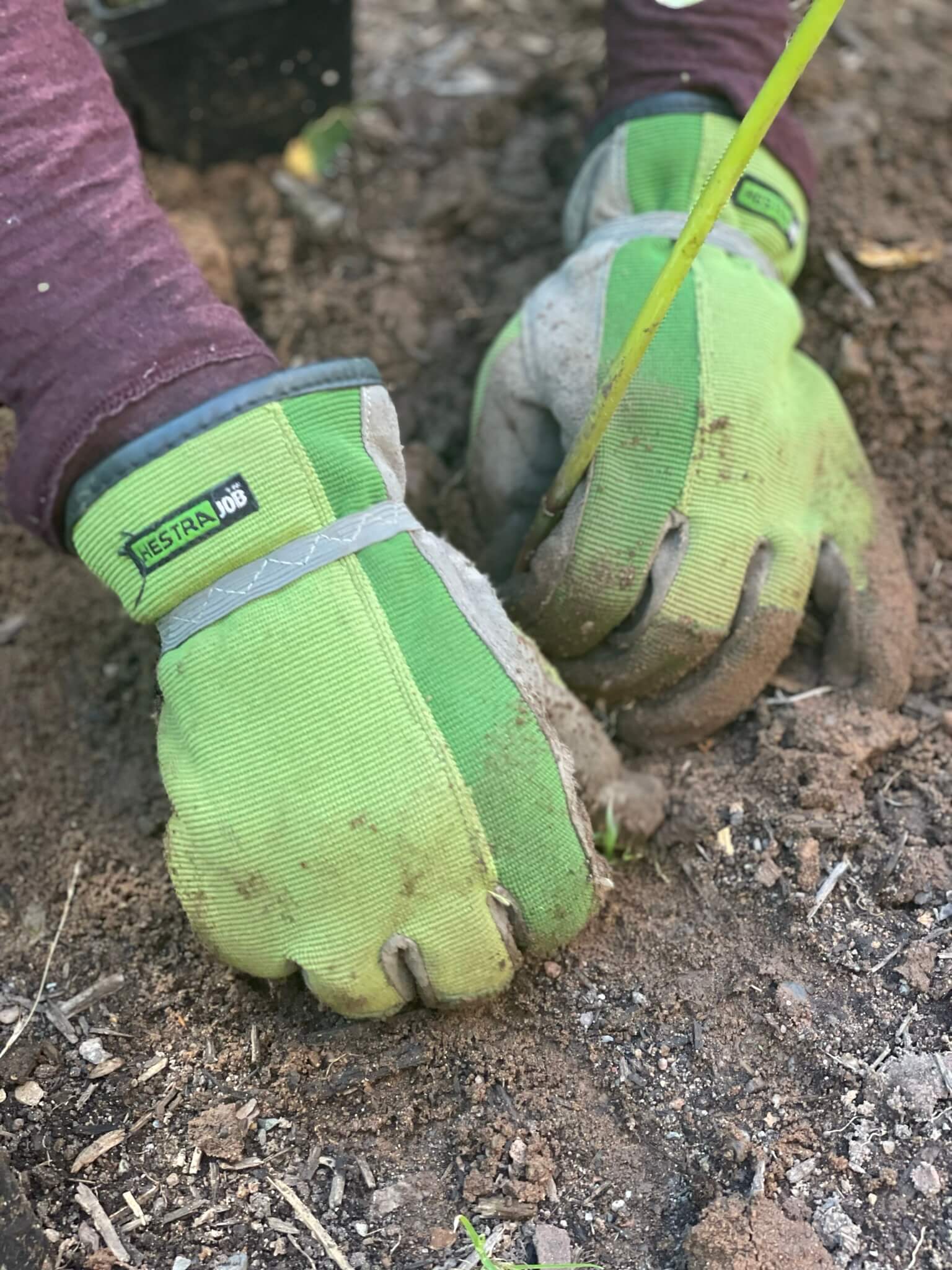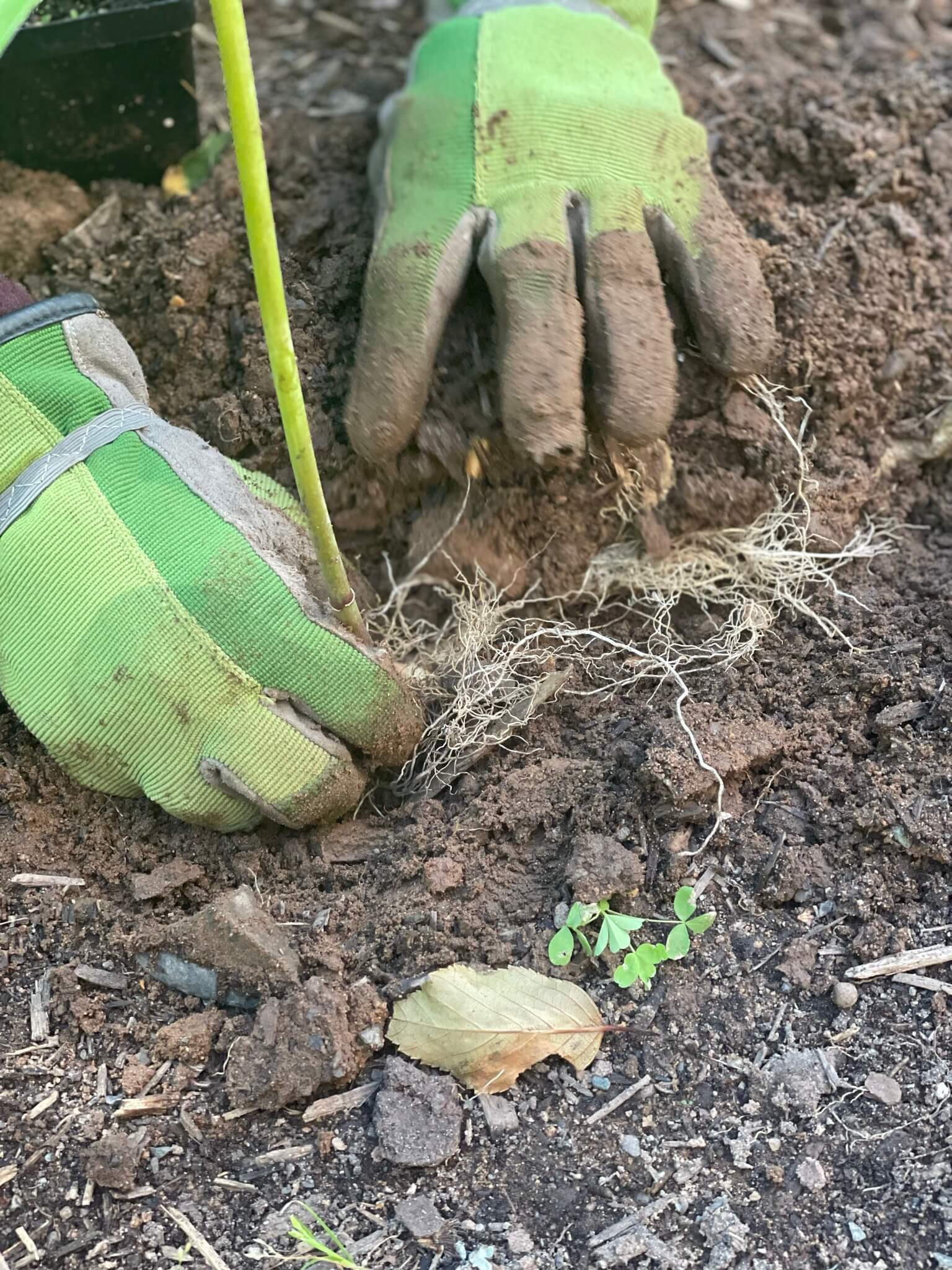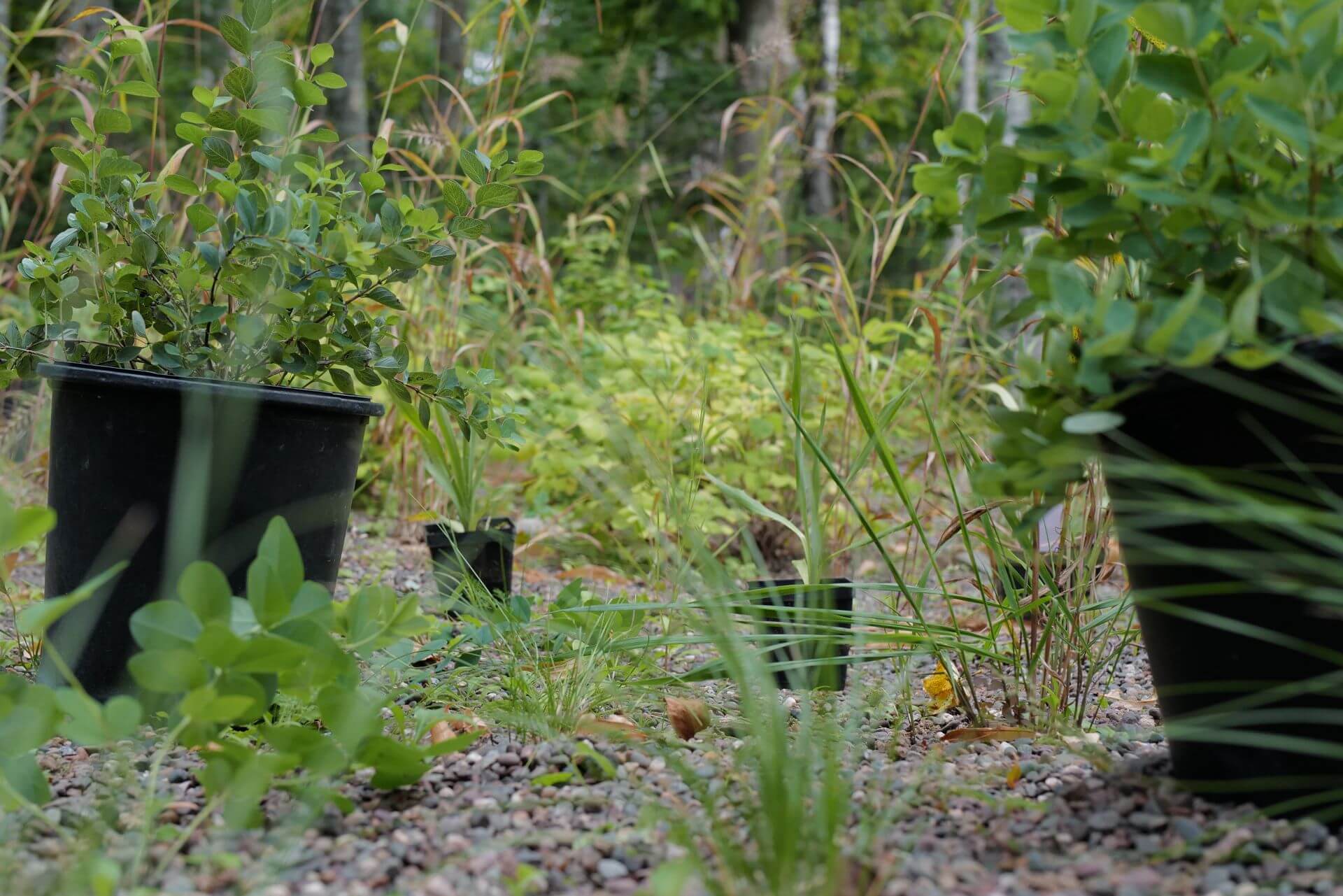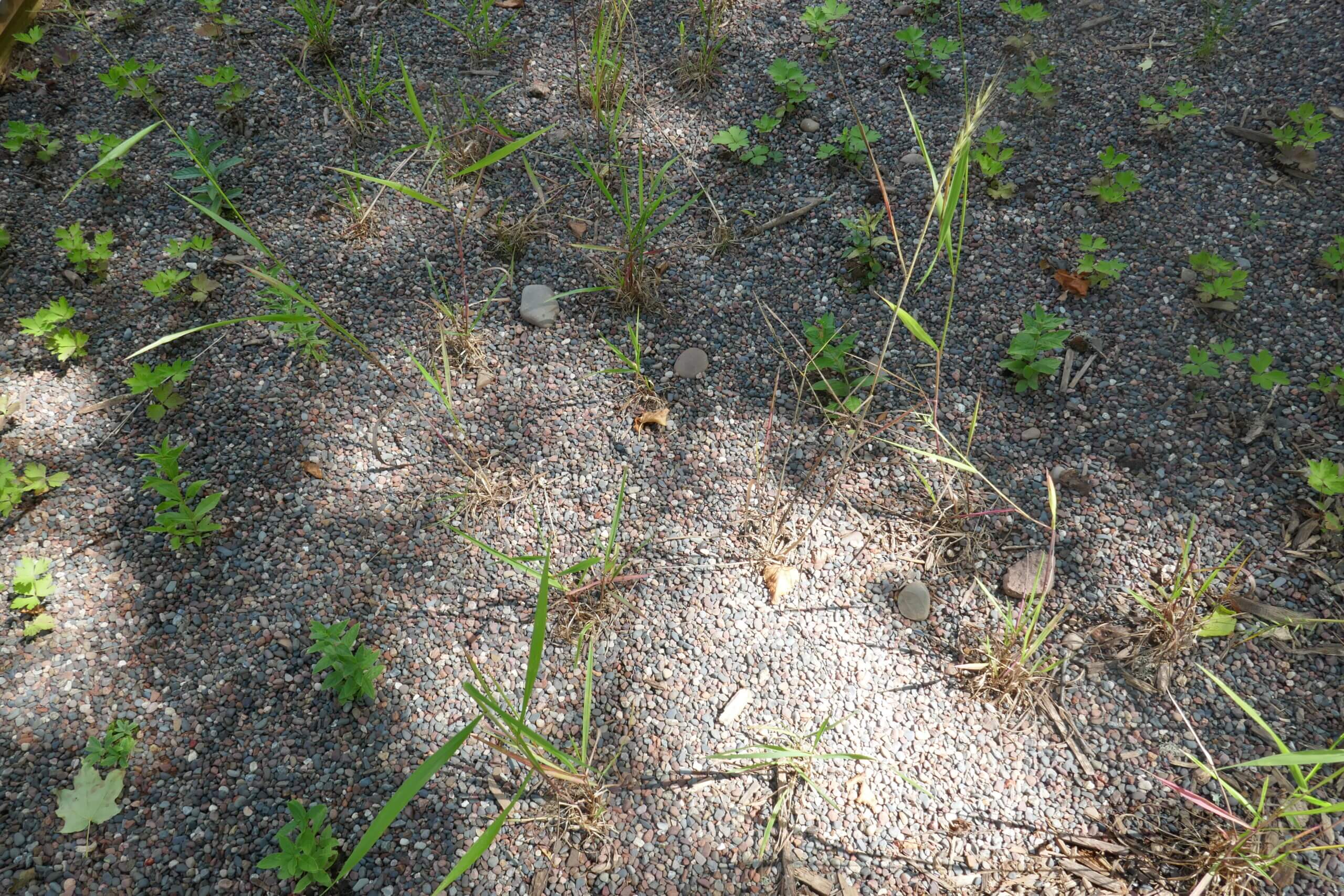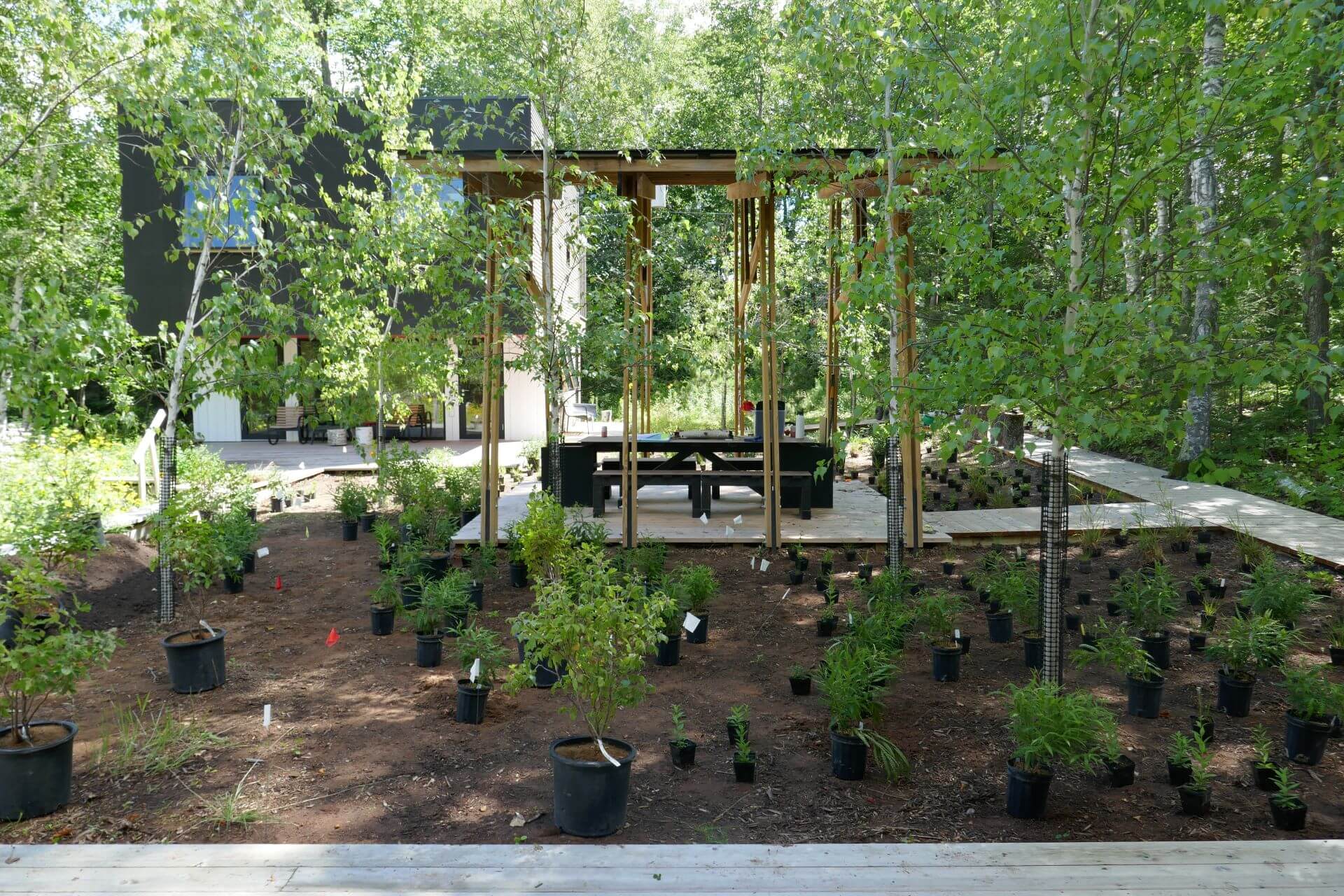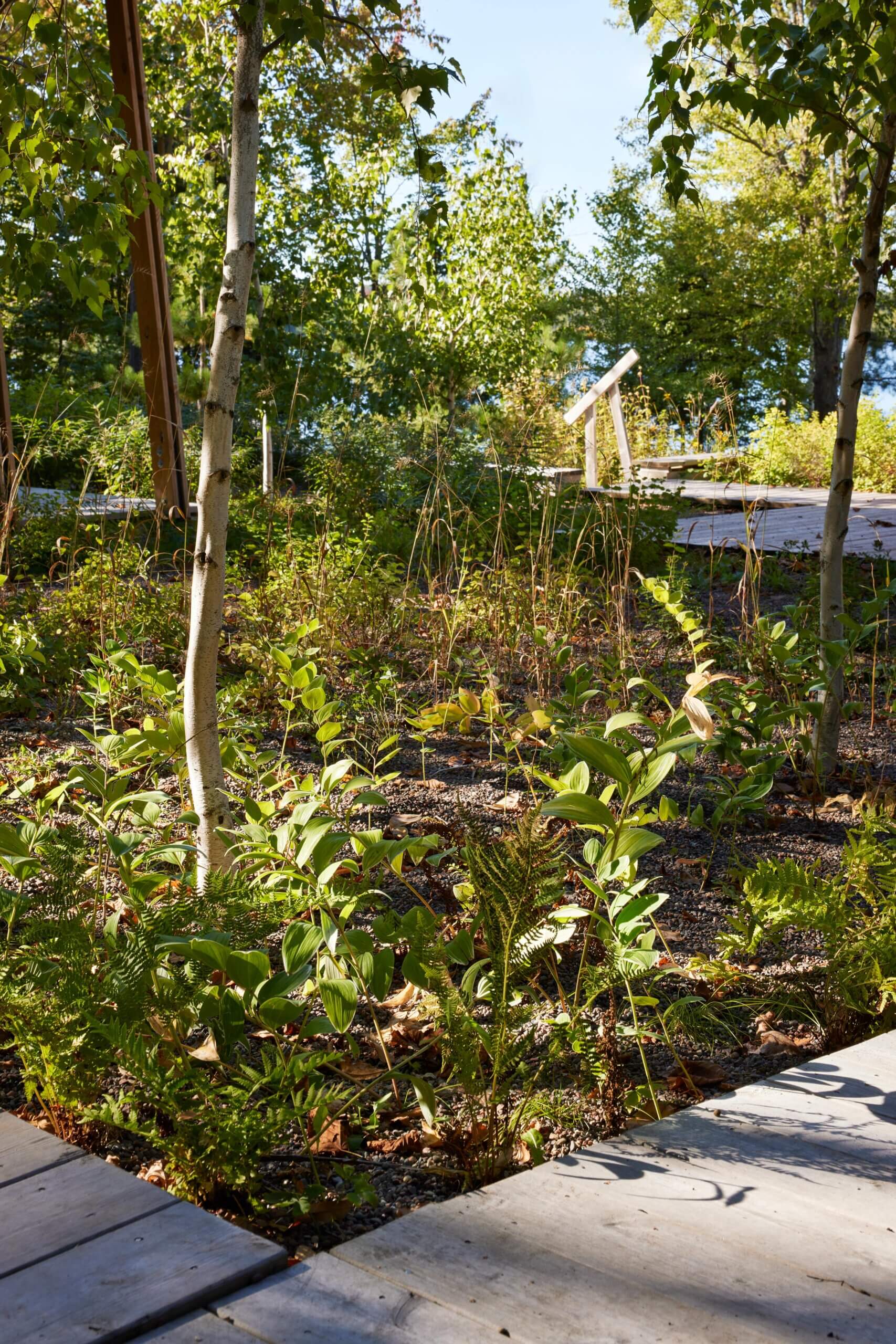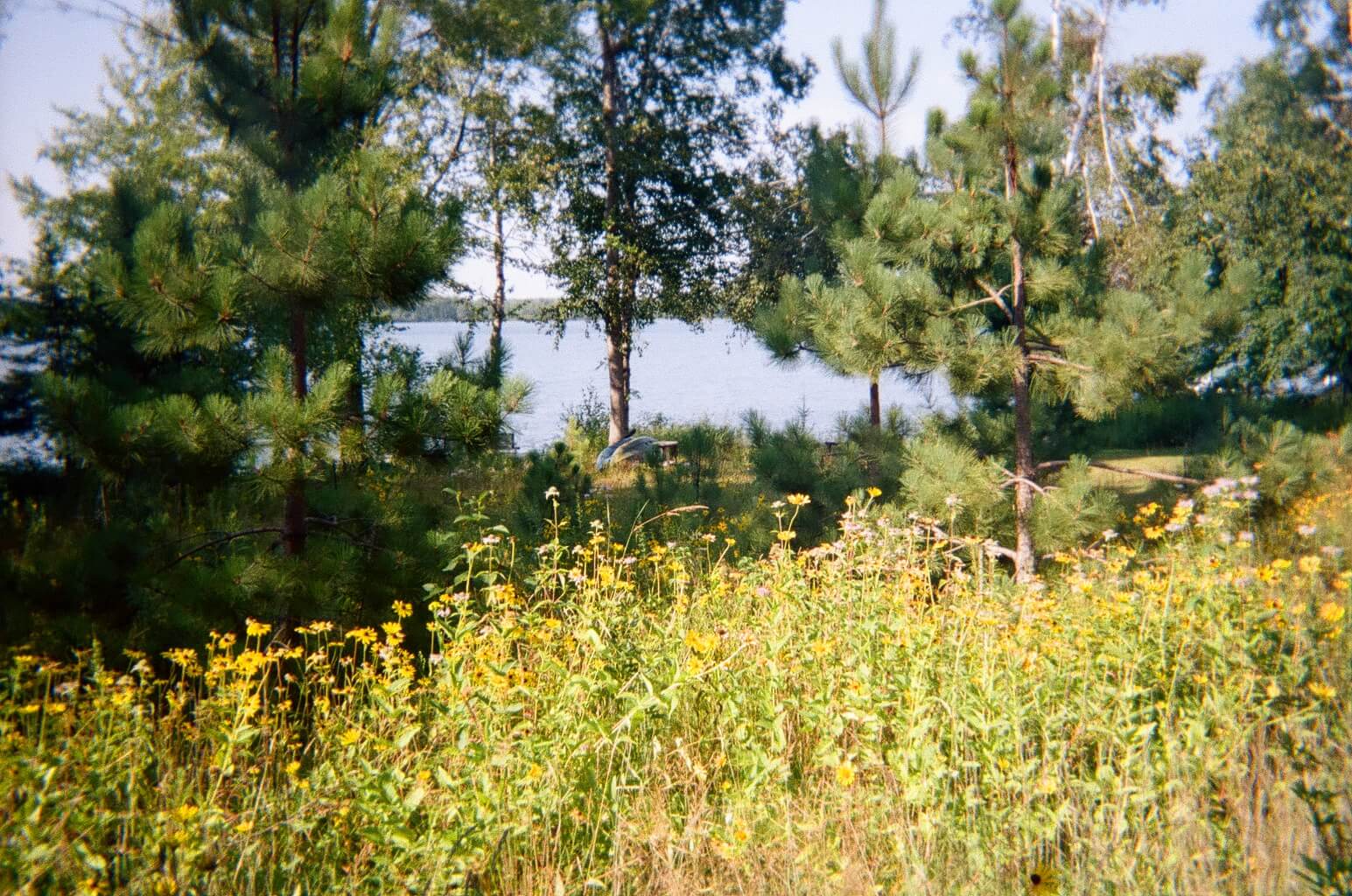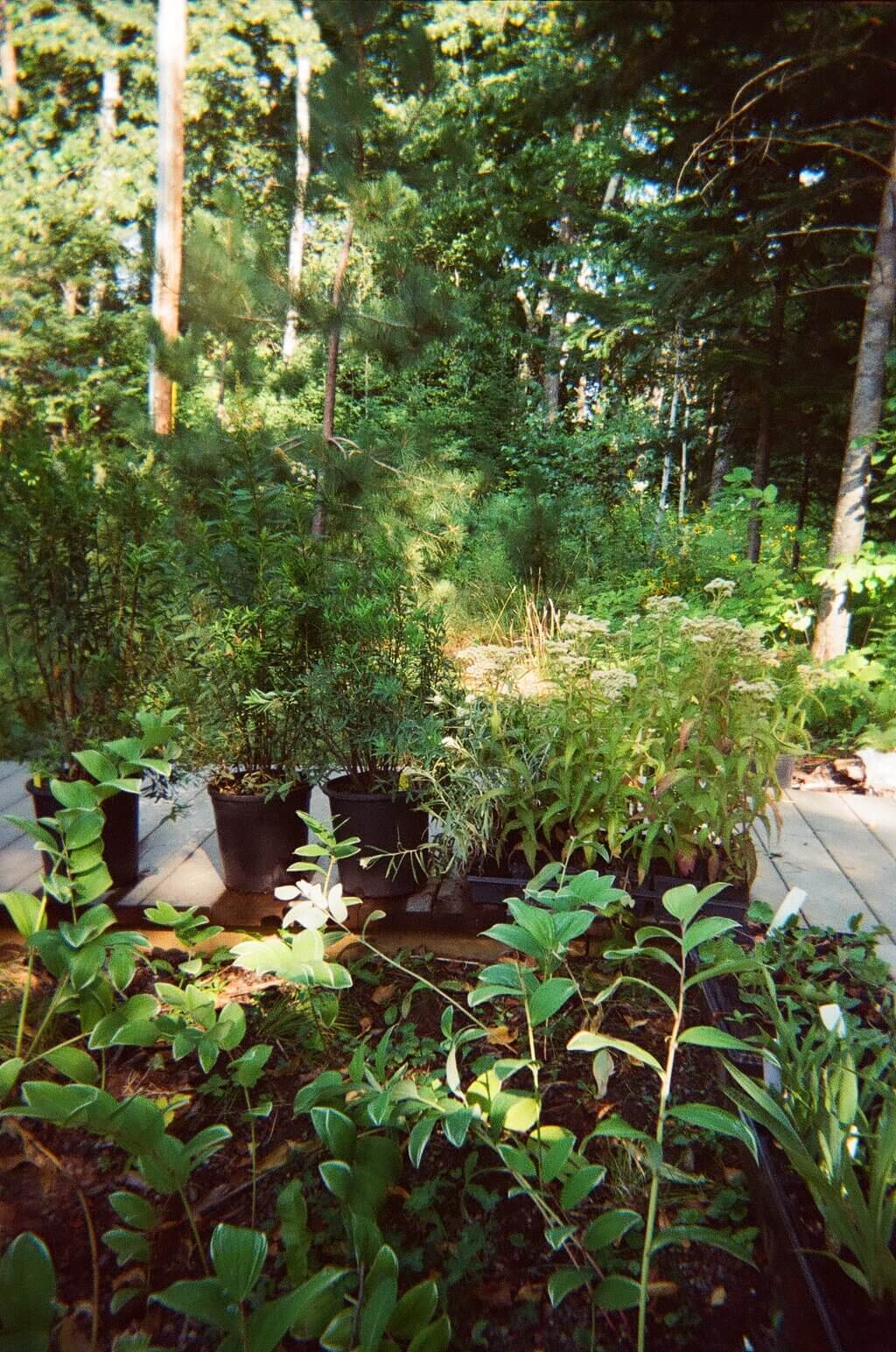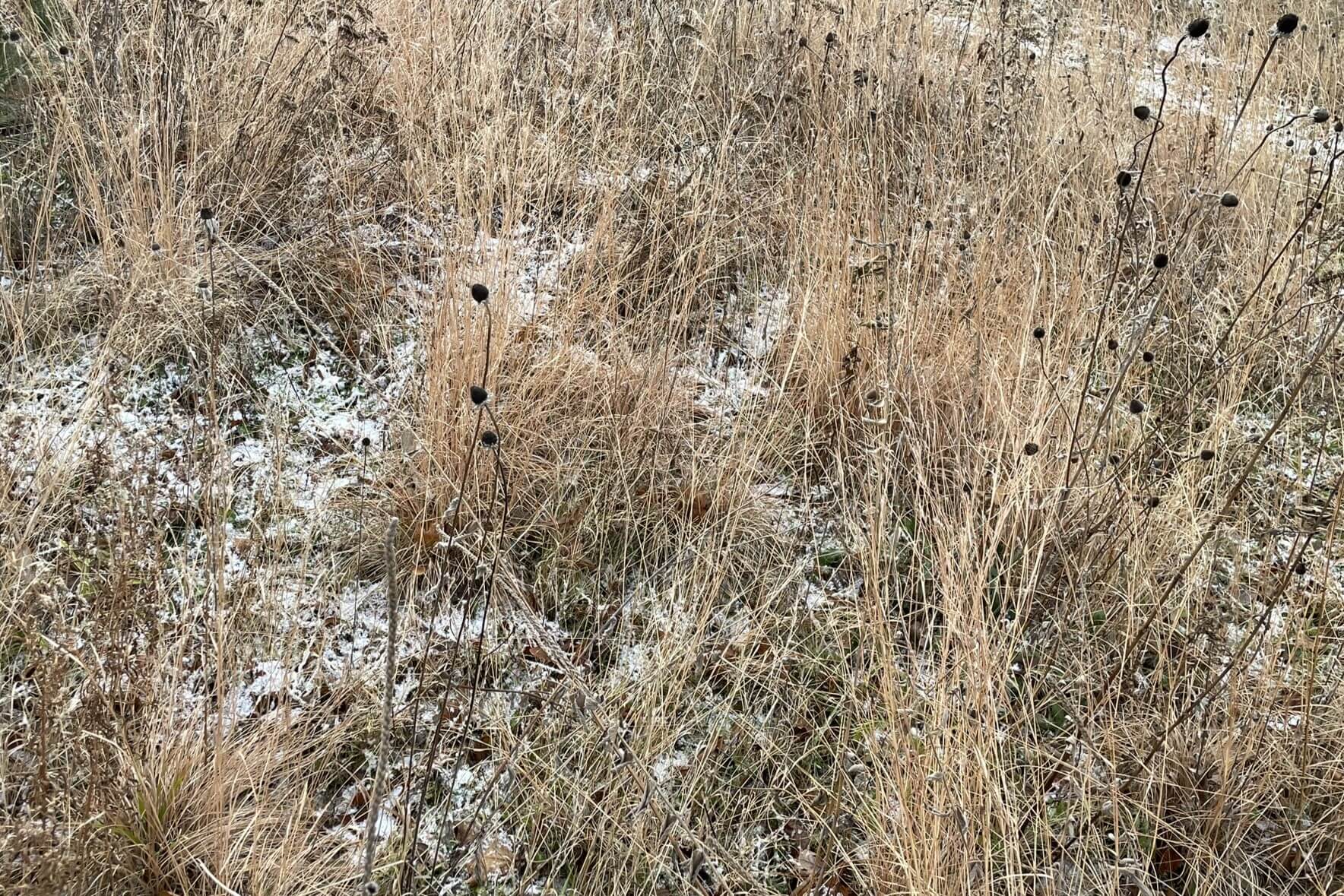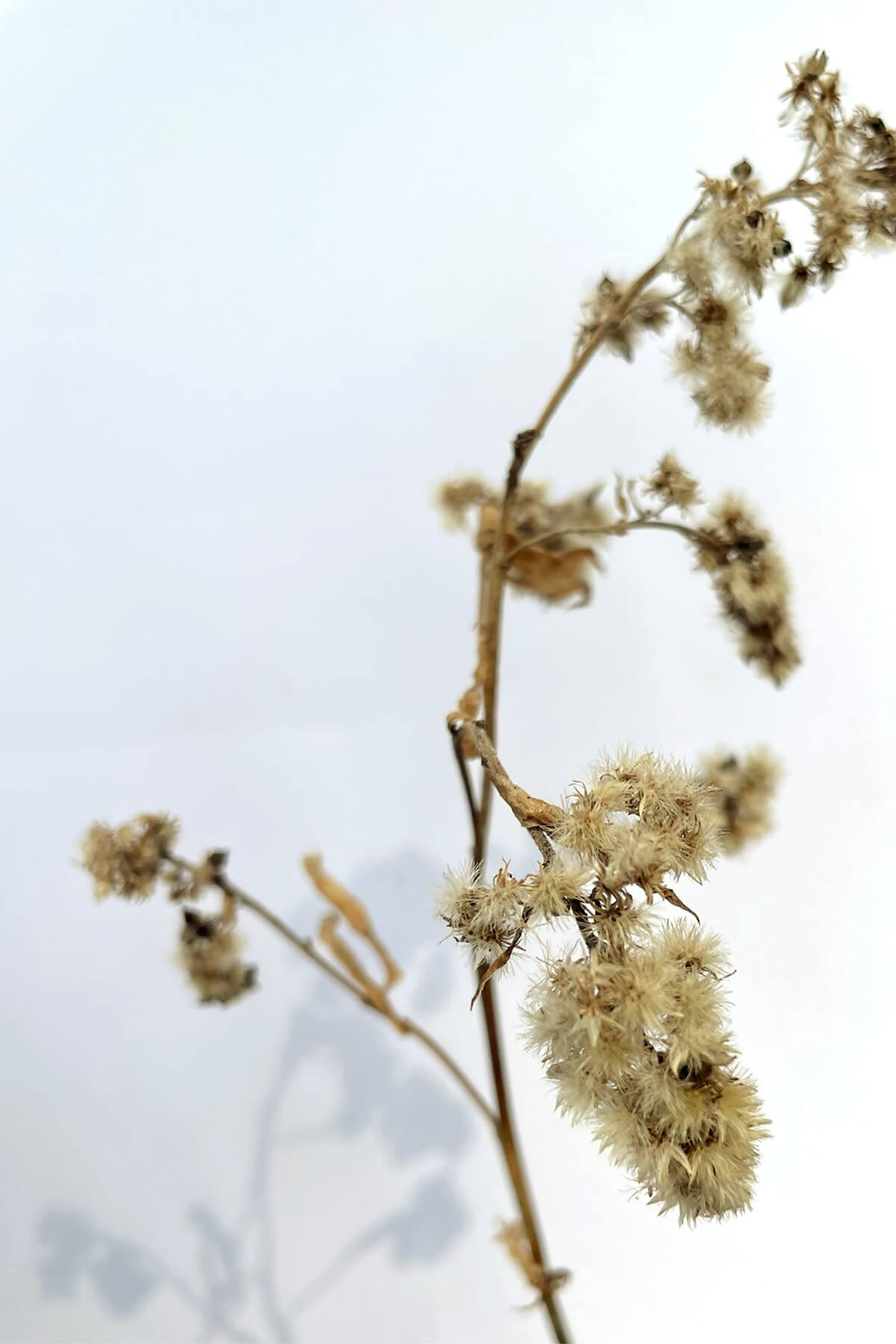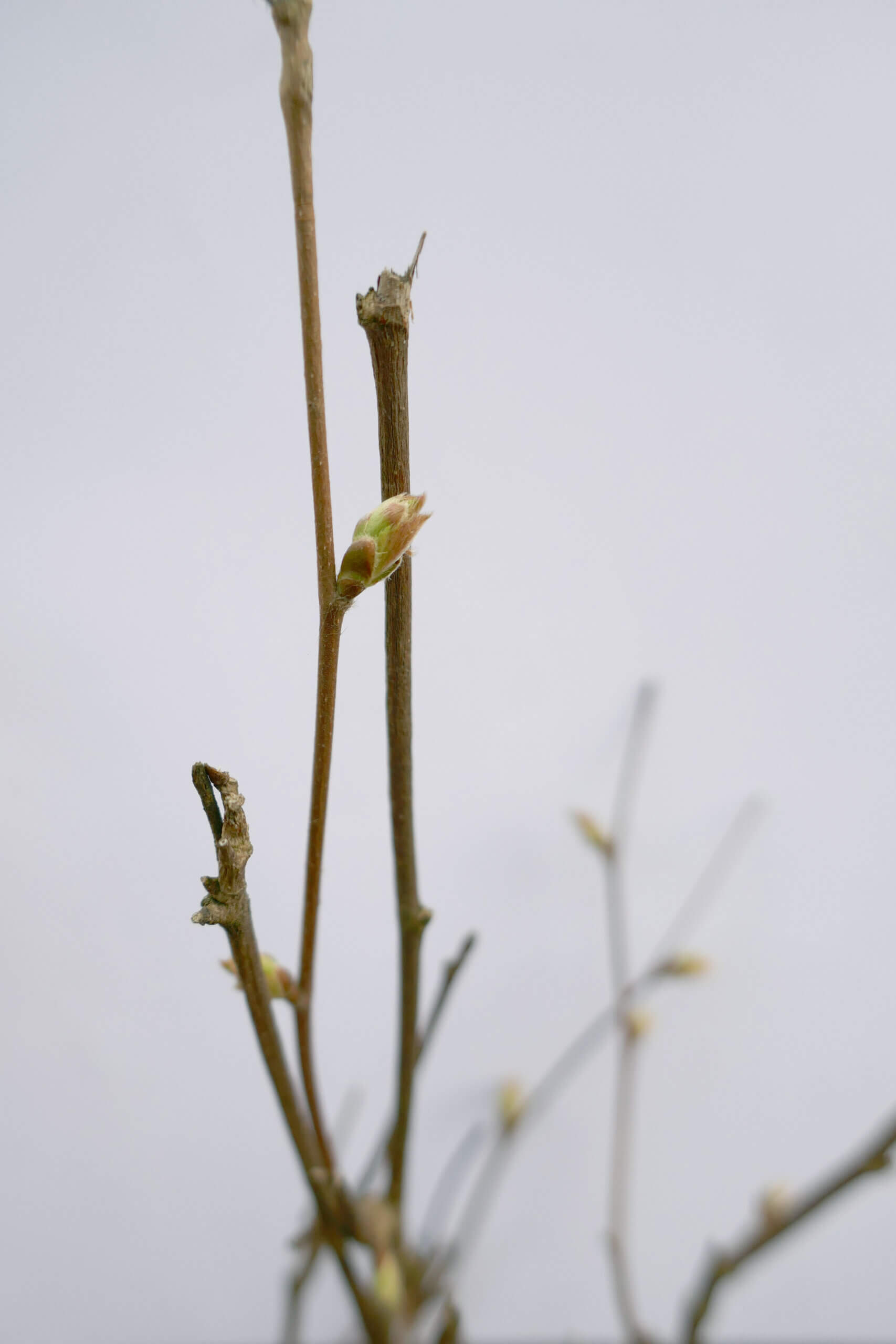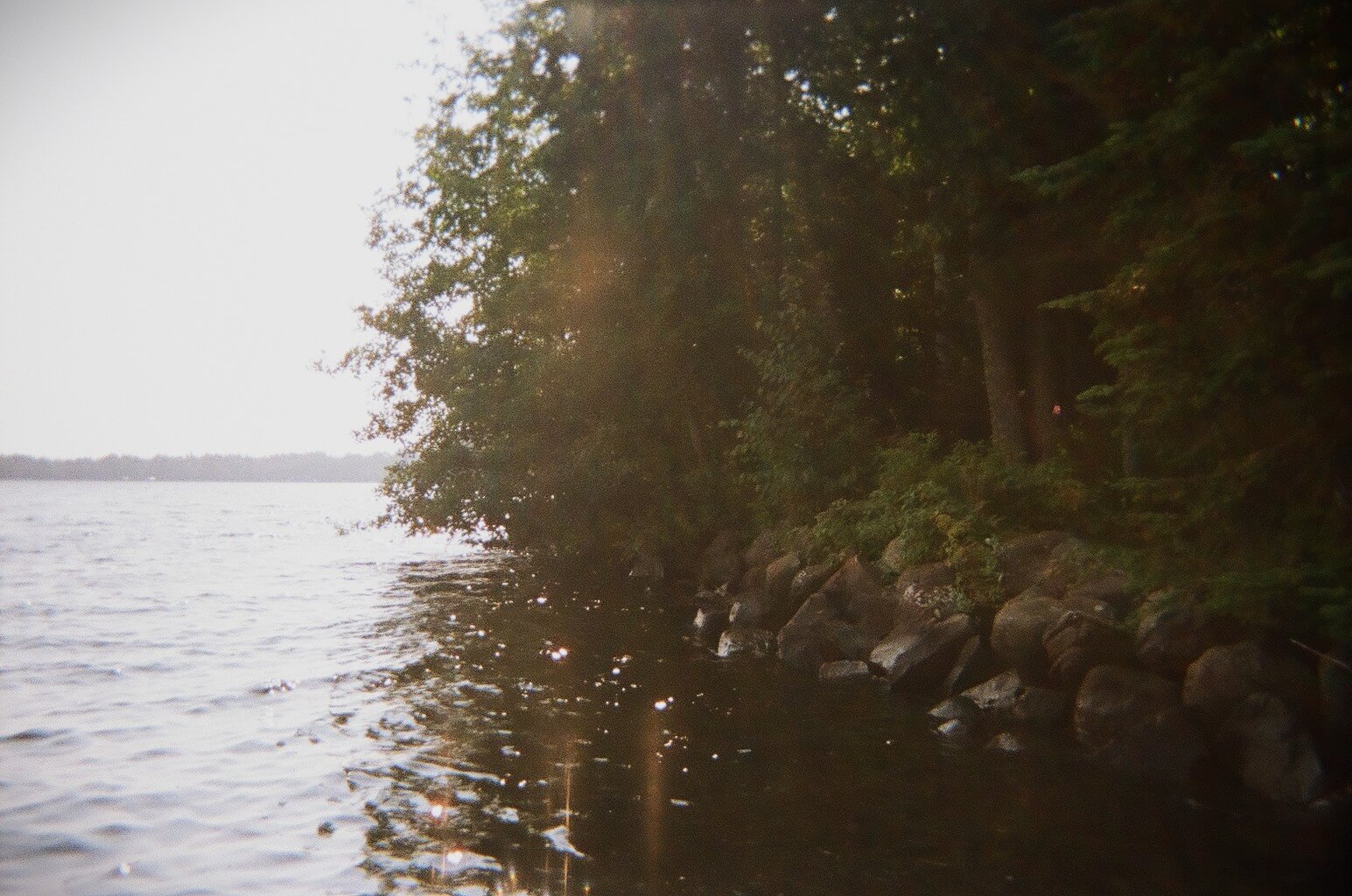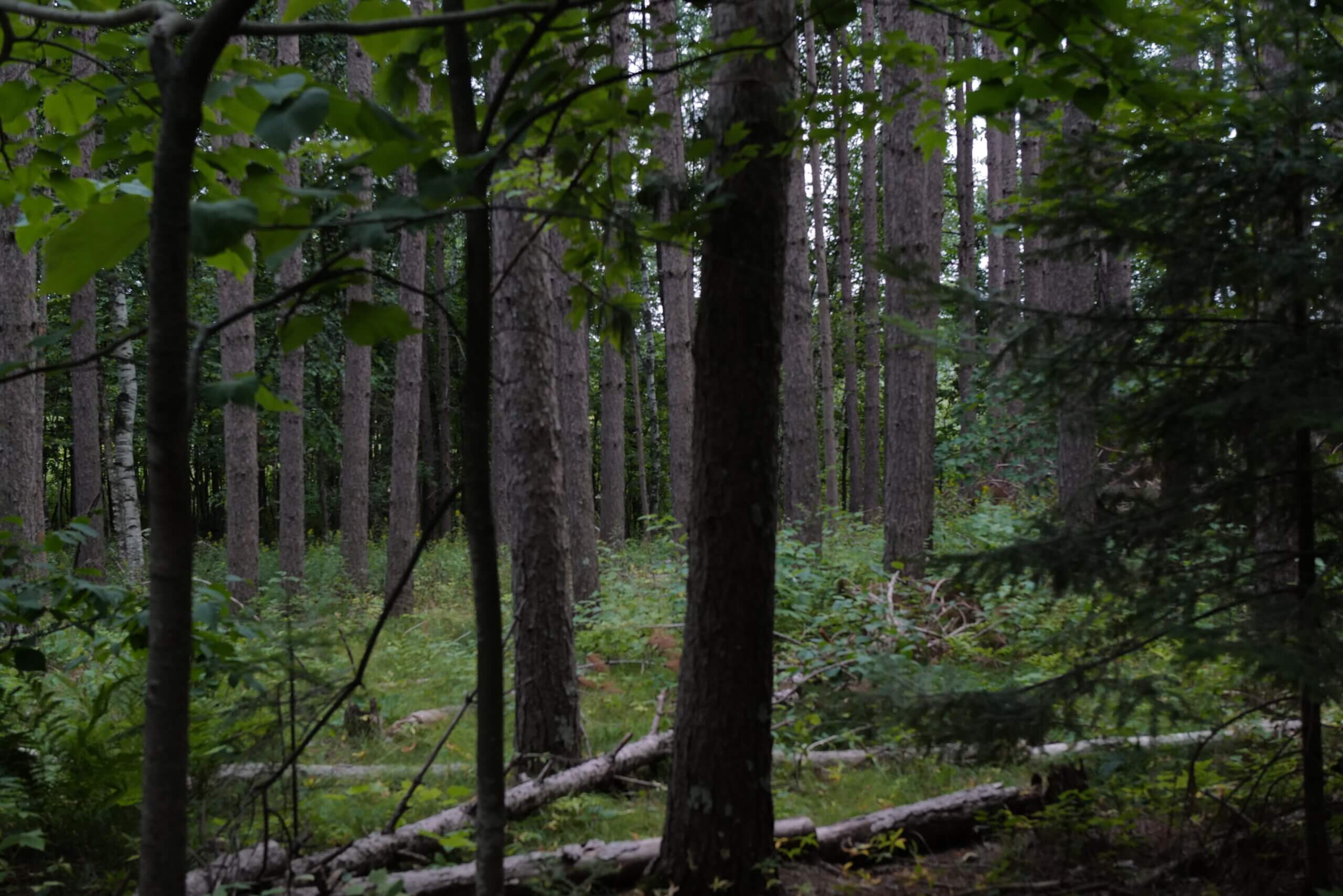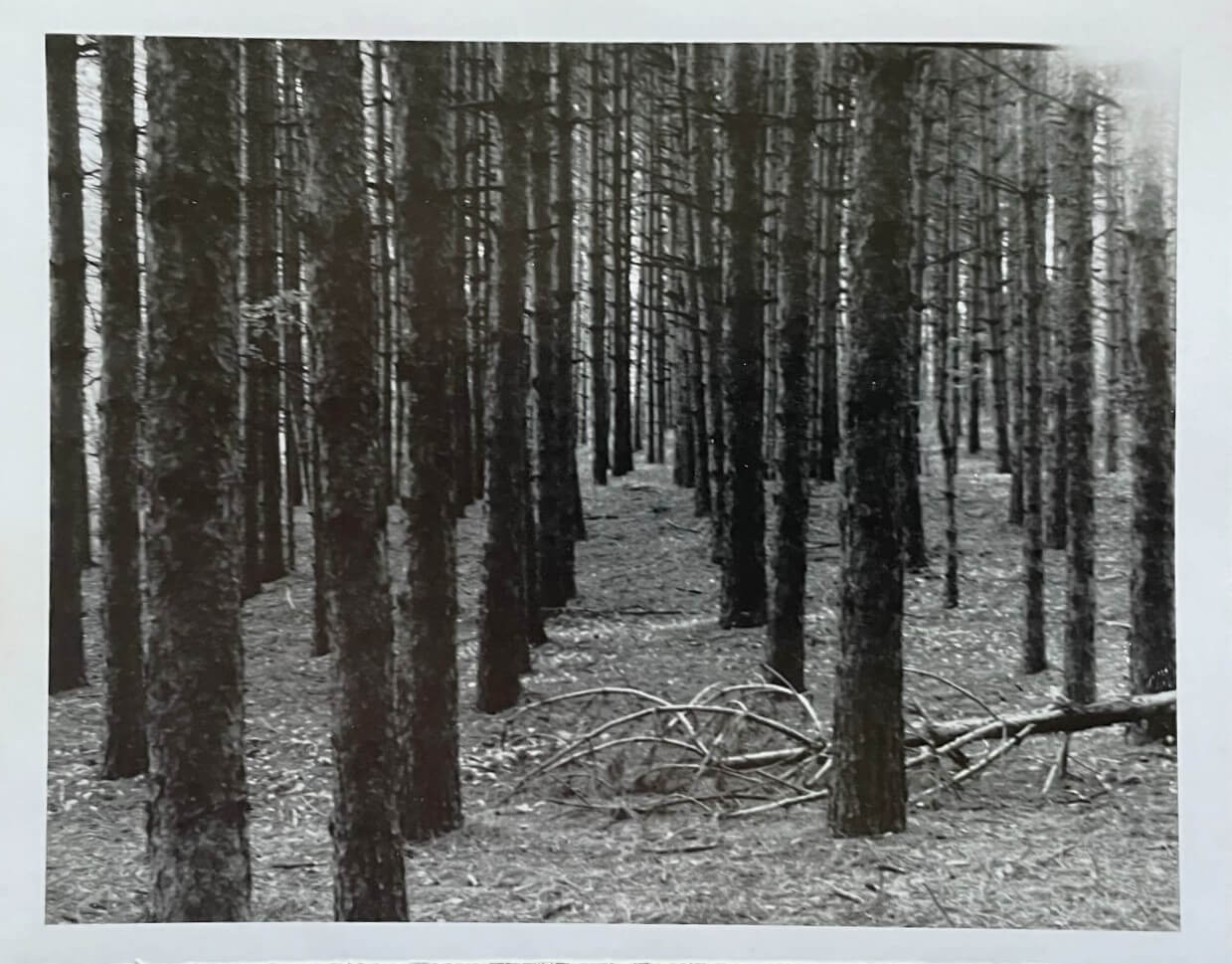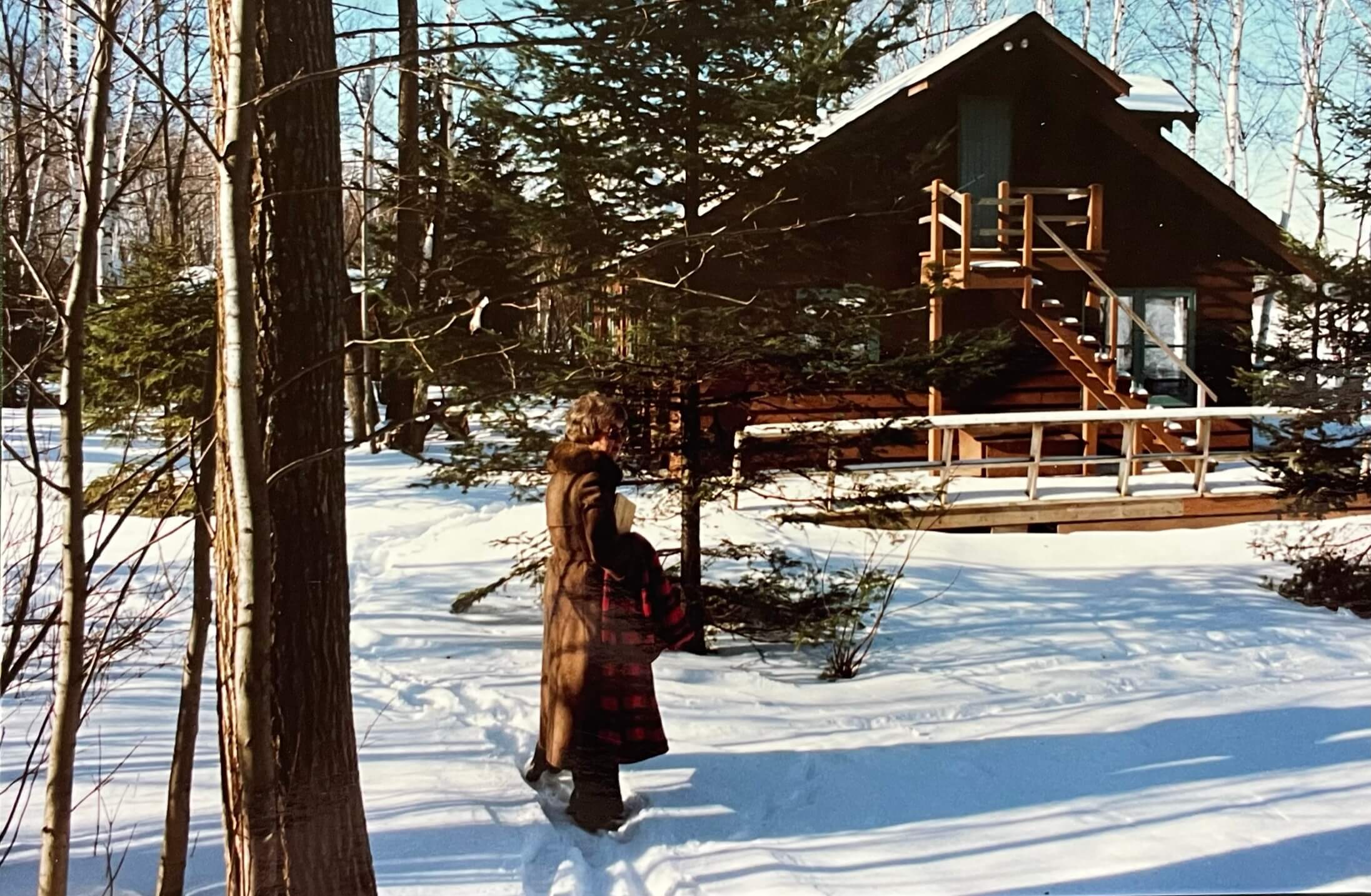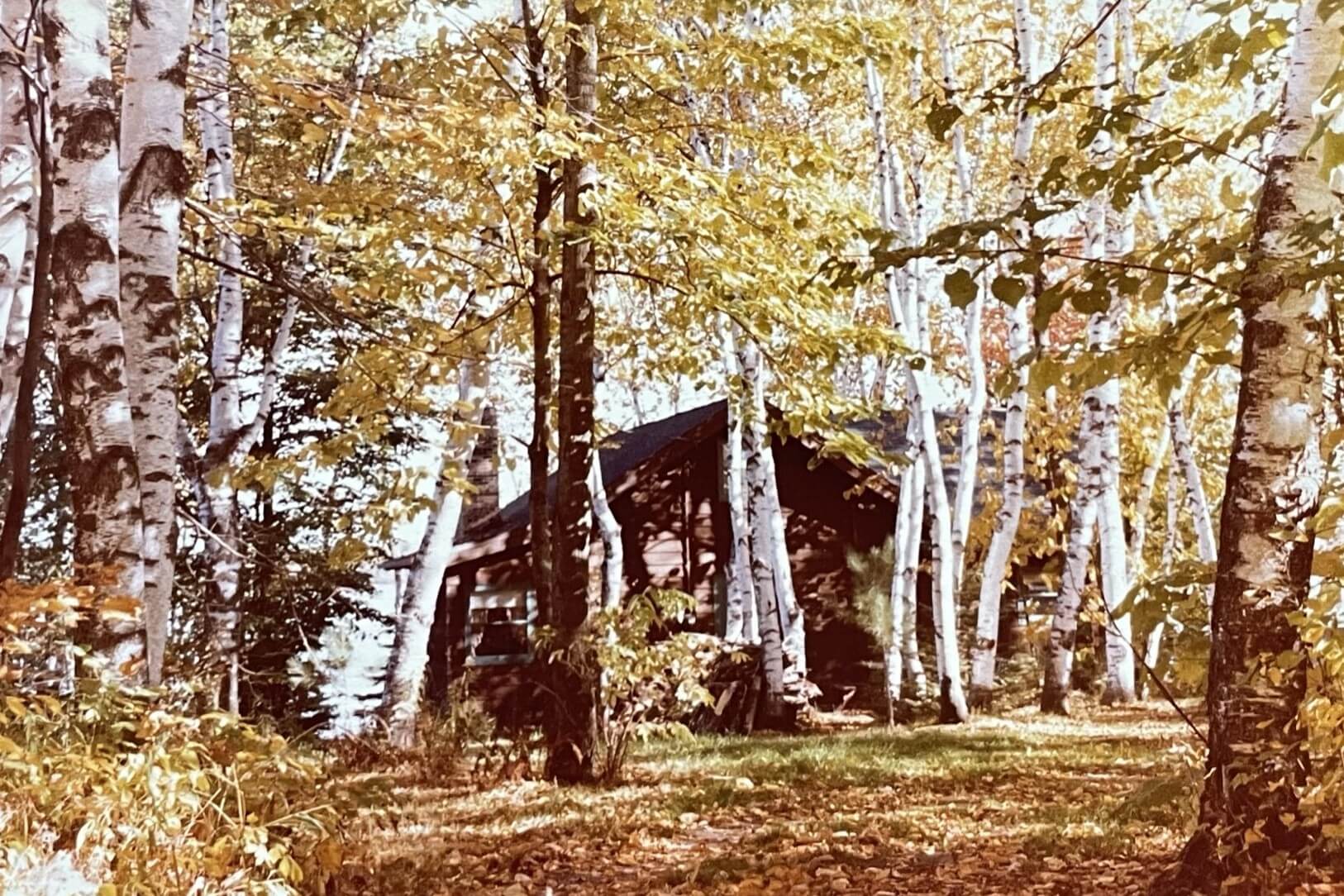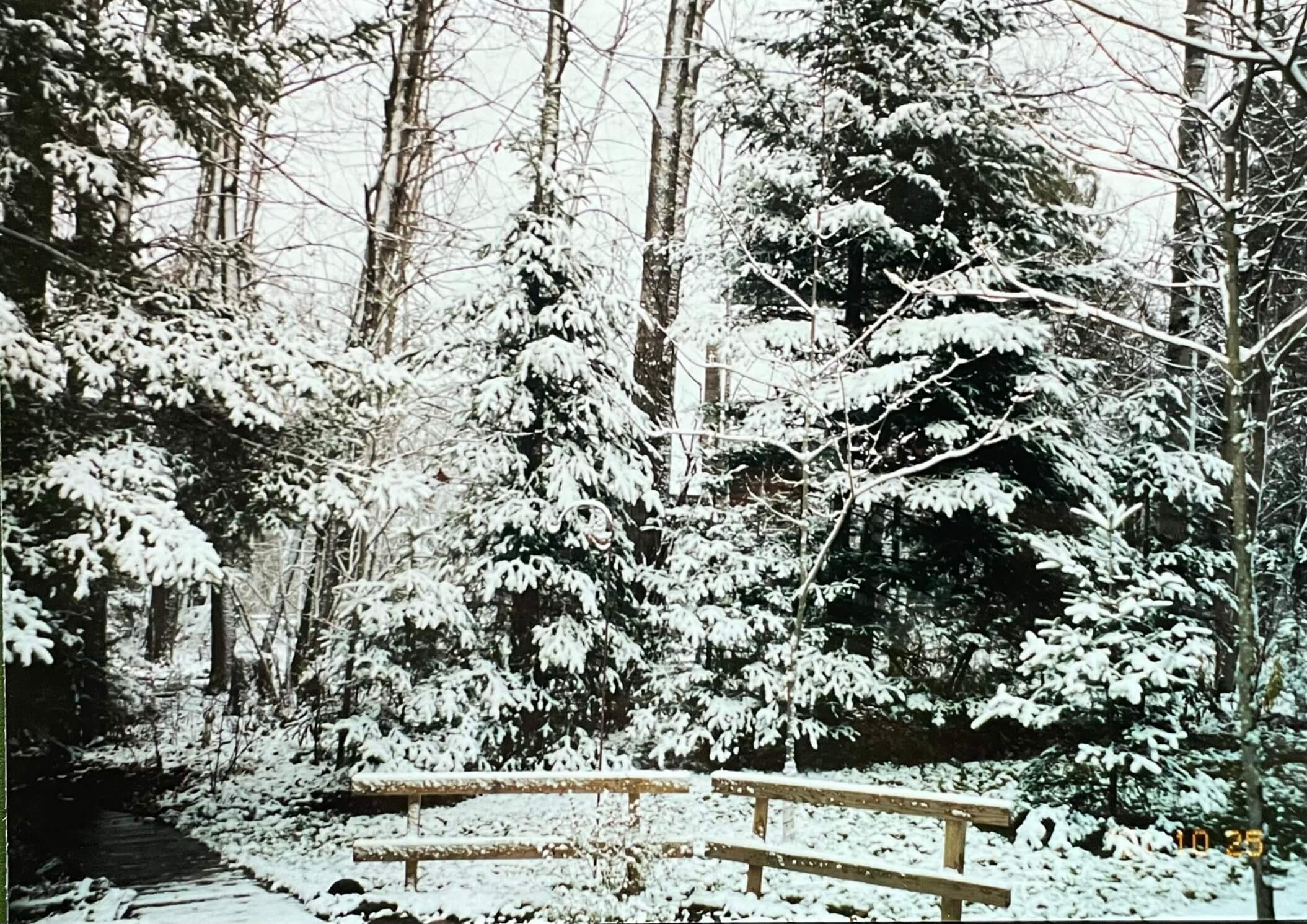Northwoods Garden
Minnesota
Minnesota
Park of the Park Lake Creek Subwatershed Ecological Assessment

Overlooking a lake in the Northwoods of Minnesota, these gardens connect two cabins and a pavilion designed by Salmela Architect to a larger family compound. They are designed as a clearing in the woods and a transition to the lakeside meadow. Wooden walkways frame the courtyard and a central covered pavilion that serve as a gathering place for the extended family.
Central to the landscape is the pavilion and gravel garden, the stones sourced from a nearby quarry, the planting medium and species selected to reduce ongoing maintenance and to eliminate the need for chemicals or irrigation. Woody plants like Rhus aromatica (fragrant sumac), Comptonia peregrina (sweet fern), and Symphoricarpos albus (snowberry) were planted as much for their tough, suckering habit as their varying color, texture, and luster. Variegated Polygonatum pubescens (Solomon seal) was transplanted from another garden where it has spread happily, and several Anemone spp. (wood anemones) that only appear to be delicate, were grown from seed at nearby Boreal Natives. Drifts of grasses—Sporobolus heterolepis (Prairie dropseed) and Elymus hystrix (bottlebrush grass)—are punctuated by floral plumes in silver and white that add height and contrast—Baptisia alba (white false indigo), and Veronicastrum virginicum (Culver’s root).
The gardens are a part of a larger assessment and stewardship project, commissioned by a community of committed private land owners interested in pursuing an alternative model of shared land management. The family has stated that the regular practice of caring for the land serves as an important way to connect with each other and previous generations.
Overlooking a lake in the Northwoods of Minnesota, this gravel garden connects two cabins, part of a larger family compound. The garden is designed as a clearing in the woods and a transition to the lakeside meadow. Wooden walkways frame the courtyard and a central covered pavilion that serve as a gathering place for the extended family (architecture by Salmela Architect). The garden is planted with native species and transplants including Sumac (Rhus aromatica), sweet fern (Comptonia peregrina), Solomon seal (Polygonatum pubescens), and wood anemones. Drifts of grasses and floral plumes in silver and white—Prairie dropseed (Sporobolus heteroiepis), Bottlebrush grass (Elymys hystrix), Baptisia alba and Veronicastrum—add height and contrast. The garden was planted in gravel from a nearby quarry to reduce ongoing maintenance and eliminate the need for chemicals or irrigation.
Stewardship has been a theme throughout this project (which is part of a larger ongoing ecological assessment). The family has stated that the regular practice of caring for the land serves as an important way to connect with each other and previous generations. It was therefore fitting that Practice Landscape and a multi-generational crew (ages 1 to 70-years old) worked to install the first phase of planting over the course of a week in the summer of 2022.
Collaborators
Salmela Architect
Prairie Restorations
Boreal Natives
Photos
Practice Landscape
